Affiliate disclosure: This post may contain affiliate links. Please see our Privacy Policy.
Herbal glycerites are alcohol-free tinctures that are perfect for children and anyone avoiding alcohol for any reason.
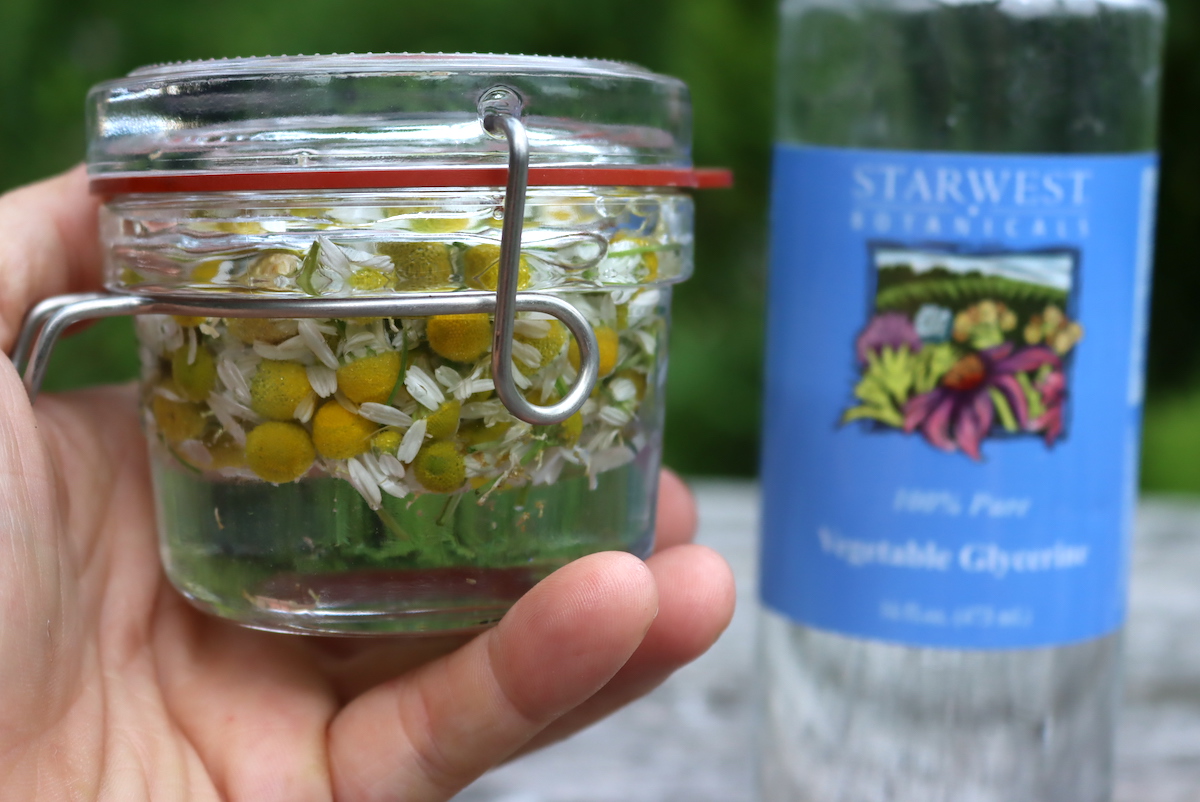
Glycerites are a gentle alternative to tinctures, and they preserve the medicinal benefits of herbs for year-round use.
Tinctures are one of the most common ways to take herbs, and they use alcohol to extract the medicinal properties from herbs. Glycerites are similar in many ways, but they don’t contain any alcohol, which makes them ideal for administering herbal remedies to children or for those who abstain from alcohol.
I’ve been using chamomile glycerite for years with my kids, especially around bedtime when the day is winding down. Known for its soothing properties, chamomile is wonderful for relieving mild anxiety and helping my little ones relax at the end of the day.
Herbal glycerites are super easy to make, and if you’ve ever made a homemade herbal tincture you’ll notice that the process is almost identical.
Using only a few basic pieces of equipment and your choice of herbs (fresh or dried), you can make a powerful glycerite in only a few minutes of hands-on time — then the mixture needs to sit for a little over a month to reach maximum potency.
Once you start making glycerites at home, you may find yourself with an entire herbal medicine cabinet packed with glycerite for every use and occasion.
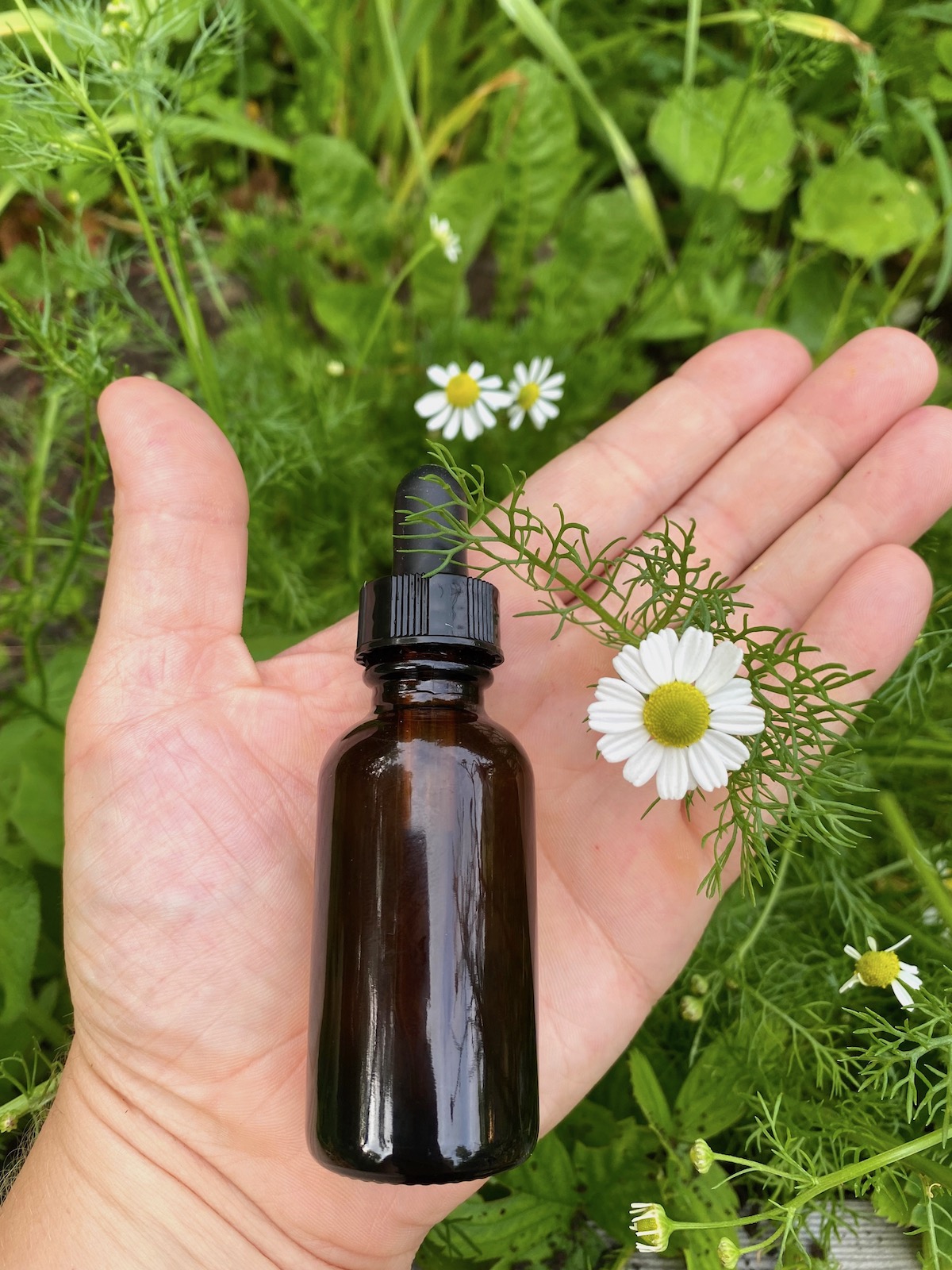
(Always consult your doctor or a clinical herbalist before trying any new herbal remedy, as there’s always the possibility of unintended consequences, allergic reaction, or interactions with other medication. If you’re harvesting wild plant material, make sure you’re 100% confident in your identification and consult multiple sources for your ID. The following is based on my research and experience, but I don’t claim to have any certifications that would qualify me to advise you on your health. Please do your own research and always verify with multiple reputable sources.)
What is an Herbal Glycerite?
An herbal glycerite is a mildly sweet tincture that is made with vegetable glycerine instead of alcohol. Vegetable glycerin is a clear, viscous liquid made from vegetable fats — palm, soybean, or coconut oil are commonly used — that have been heated under pressure with a strong alkali ingredient, such as lye. It’s a completely non-toxic by-product of all-natural soapmaking.
The process causes the glycerin found in the oil to separate, leaving behind a pure, food-safe vegetable glycerin that can be used for a wide range of applications. When used to make a tincture, vegetable glycerin acts as a solvent to extract beneficial compounds from plant matter or fungi.
Glycerites aren’t quite as potent as a tincture made with alcohol, but they still pack a powerful herbal punch. Glycerites are a great option for kids and adults who are sensitive to alcohol; even pets can benefit from herbal remedies when taken as a glycerite.
How To Make an Herbal Glycerite
When making an herbal glycerite, the first thing to consider is the type of plant matter you’d like to use and whether it’s going to be fresh or dried. If using dried material, you’ll need to add a small amount of distilled water to the glycerin to rehydrate the ingredients, which helps with extraction. I recommend 1 part water for every 3 parts of glycerin (in other words, the solution should be 25% water and 75% glycerine), but you can safely go down to about 60% glycerine if needed.
Don’t use less than 60% glycerine or your glycerite can spoil.
On the other hand, if you’re making a glycerite from fresh plant material you can use 100% vegetable glycerin (just give the herbs a good muddle to expose more surface area for efficient extraction).
To get started, fill a clean jar with the plant material. I like using amber glass jars, as it prevents too much light from getting in. If you’re working with dried ingredients, fill the jar halfway full — the plant material will expand as it sits in the liquid. Fresh plant material should be cleaned and chopped before filling the jar 3/4s full.
Pour the vegetable glycerin and water (if using) over the plant material, using a chopstick or similar pointed kitchen tool to break up any air bubbles that may have formed after the liquid was poured. Seal with a lid and store the jar at room temperature away from light.

Let the contents of the glycerite macerate for about 4 to 6 weeks. I typically give glycerites the full 6 weeks to develop so that the finished potency will be at peak levels. Give the jar a shake every couple of days, and top off the glycerin if you see any of the plant material exposed to air.
When the glycerite is ready, pour the contents of the jar through a fine-mesh sieve that has been lined with cheesecloth or a coffee filter into a bowl or large measuring cup. Using a funnel, decant the strained glycerite into small amber glass bottles with a dropper. Label the finished herbal glycerite with the contents of the bottle as well as the date it was made — your glycerite is now ready to be used as needed.
How Long Do Herbal Glycerites Keep?
Although they don’t last quite as long as traditional alcohol-based tinctures, herbal glycerites will last anywhere from 1 to 2 years if stored in a cool, dry location away from light (the higher the vegetable glycerin concentration the longer the glycerite will keep).
For more information on shelf life and storage, I’d suggest consulting the Herbal Academy’s Guide to Herbal Preparation Shelf Life.
Common Types of Herbal Glycerites
Like tinctures, glycerites can be made using any number of herbs, fungi, and other plant materials. Because glycerites aren’t made with alcohol, they’re often used as a way to administer herbal remedies to children. Some examples of particularly child-friendly glycerites include chamomile (for sleep), peppermint or fennel (for stomachaches), and elderflower or elderberry (for immune health/fever).
Glycerites can also be made with a combination of herbs, like this Tummy Tamer glycerite recipe that uses lemon balm, catnip, fennel, and peppermint for a soothing effect.
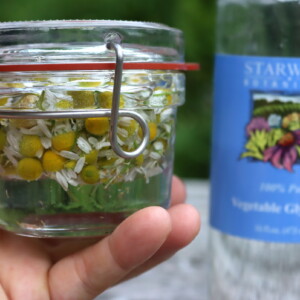
How to Make Herbal Glycerites (Alcohol-Free Tinctures)
Equipment
- Measuring cup
Ingredients
- Fresh or dried plant material roughly chopped
- Pure vegetable glycerin
Instructions
- Fill a clean mason jar 3/4 full of fresh plant material or 1/2 full of dried plant material.
- For dried plant material: cover with vegetable glycerin and water in a 3:1 ratio (or 75% glycerine and 25% water). For fresh plant material: cover with 100% vegetable glycerin.
- Apply lid and gently shake the contents of the jar.
- Let the jar sit in a cool, dry place away from light for 4 to 6 weeks. Shake every day or two, replenishing the jar with glycerin if any plant matter becomes exposed.
- When the glycerite is ready to be decanted, pour it through a cheesecloth-lined fine mesh sieve into a bowl or large measuring cup. Pour the strained glycerite into amber glass bottles with a dropper using a funnel.
- Label the glycerite with its contents and the date it was made. Store in a cool, dry place away from light for up to 2 years.
Disclaimer on Homemade Herbal Remedies
I’ve been foraging wild medicines and treating my family with herbal remedies for the past 20 years, but I’m self-taught. Be aware that I am not a clinical herbalist, and this is based on my own research and personal experience using medicinal plants. I do not claim to have the experience that’d qualify me to advise you on your health, and I’m only providing this as a reference to encourage a broader interest in medicinal plants.
Please use this as a jumping-off point, but always do your own research and verify anything you read with multiple sources.
It’s always possible to have an adverse reaction to any medicinal herb, and plenty of people are allergic to even gentle herbs like chamomile. Always consult your doctor or a certified herbalist before trying any new medicinal plant. Often, they can have unintended reactions in combination with other herbs and supplements, and many herbs have side effects even when they are effective for their intended purpose.
If you are seriously interested in herbal medicine, I’d suggest investing in a course in herbal medicine, and I’d recommend any of the online courses put out by the Herbal Academy of New England. Specifically, the introduction to herbal medicine course and the family herbalist group of courses.
They also have a mushroom course, covering both medicinal and edible mushrooms, and a Botany and Wildcrafting Course. I’ve taken both and they’re informative, inspiring, and artfully presented.
Homemade Herbal Remedies
Looking for more homemade herbal remedies to stock your medicine cabinet?

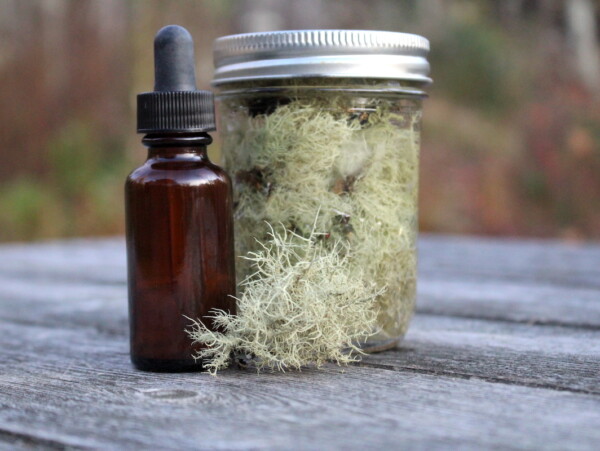
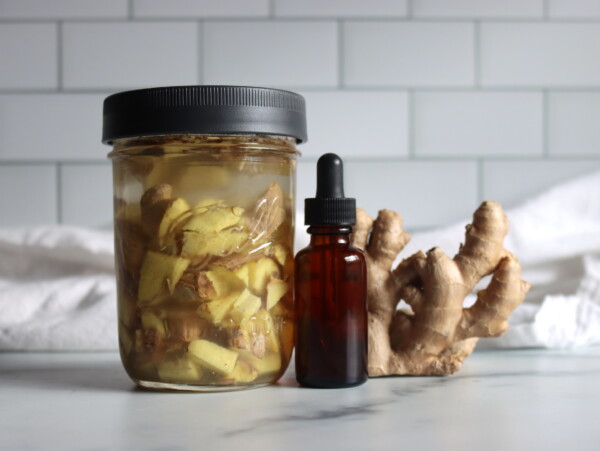
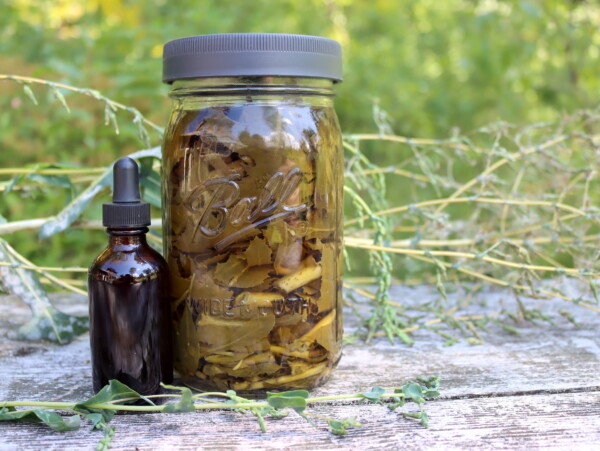
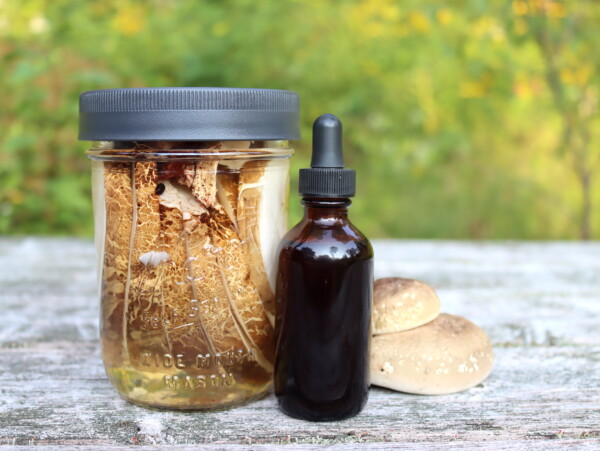
Hello and thank you!
I enjoyed your article and while learning about glycerin based remedies and things like extract, it’s helpful 🙂
So I’m wondering if I may ask if you also make flavorings such as with dried berries and/or spices? If you know or can direct me as I cannot find a thing online about using spent fruit and reusing it after the flavoring reaches the desired taste. My frugal self doesn’t want to just throw out the strawberries, blueberries, cherries, etc as well as a pumpkin pie spice blend. That one I strained off and decided to give it another round of extracting-simce that extract/flavoring was very strong.
Would you just throw this fruit out? Or could it be dehydrated and eaten as snacks?
Your thoughts would be very appreciated.
Good day to you and thanks for any input.
I have heard of people putting it into things like muffins or other baked goods before but most people just compost it.
Thank you so much for this easy to read follow instructions for making a tincture with glycerin. There is not much information out that I’ve been able to find on alcohol free!
Any more resources or suggestion would be greatly appreciated.
Thank you!
T Shelton
You’re very welcome. We’re so glad you found it helpful.
The ratio for water to glycerine is backwards and your glycerite is likely to spoil with that much water. It should be 75% glycerine to 25% water.
Oh my goodness, thank you for catching that! It was right in the article, but I type-o’d it in the recipe card and switched them around. It’s fixed now. Thanks again!
Where did you get the Italian style canning jar? Do have multiples? Do you use them for actual canning? They seem really nice.
I got a few to see how they work and seal, and they’re great. The problem is, they’re expensive, at least in the US, so I don’t have enough to use them for anything but very small batch stuff. Search “Luigi Bormioli Lock Eat Canning” and you’ll find them.
I really appreciate this article! I recently tried to make a glycerite with Jamaican Dogwood. It doesn’t grow in my area and the pre-made tinctures are kind of expensive. I tried one and found that it works great for my nerve pain. When I made my own, however, after it should have been done steeping, I got the jar out and it had mold on the top! I don’t know what I did wrong and if I should throw it out? What do you think?
This usually happens when some of the plant material gets above the liquid. You also want to be sure that you’re shaking it on a regular basis.